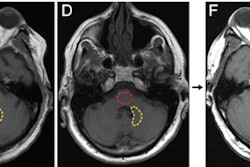Dear AuntMinnie Member,
One of the most despised aspects of board certification for radiologists -- the 10-year maintenance of certification (MOC) exam -- is dead.
The American Board of Radiology (ABR) announced last week that it was ending the requirement that board-certified radiologists renew their credentials every 10 years by passing an exam that tested their skills and knowledge. Implemented in 2012 to parallel similar changes in other medical specialties, the MOC exam replaced the time-honored system in which radiologists were credentialed for life after passing their initial board exams.
But the 10-year exam proved to be intensely unpopular with physicians, and a slow-burning rebellion caught fire as doctors organized to oppose it. By ditching the 10-year exam, the ABR is moving in sync with other physician certification groups that are rethinking their approach to MOC.
What happens now? The ABR has told its members that while the 10-year exam is gone, it is developing a new method in which radiologists will be tested on an ongoing basis using an email system designed to assess competency without proving too onerous. The system is already being vetted in other medical specialties; time will tell how it plays out in radiology.
Get the rest of the story on the changes to MOC by clicking here for an article in our Imaging Leaders Community.
While you're in the section, check out a new article from contributing editor Dr. Nicolas Argy on creating a culture of safety in your radiology practice. Dr. Argy believes there is an unfortunate reluctance among radiology practices to analyze and address oversights in image interpretation -- a reluctance that has major patient safety implications. Read more by clicking here.
You'll also find a column on a potential new business opportunity in interventional radiology. Find out what it is by clicking here, or visit the community at leaders.auntminnie.com.
US contrast for heart attacks
Could ultrasound contrast be used as a therapeutic tool for treating patients with heart attacks? Researchers from Brazil and the U.S. sought to answer this question in an article we're featuring in our Ultrasound Community.
The researchers used ultrasound in a small group of patients experiencing ST-elevation myocardial infarction (STEMI). The patients were injected with a commercially available ultrasound contrast agent and scanned with an ultrasound scanner set on a high mechanical index. The researchers believed that when activated by the ultrasound beam, the contrast agent could improve microvascular blood flow in STEMI patients. Find out how well it worked by clicking here.
While you're in the community, be sure to check out this story on the effectiveness of new guidelines for managing thyroid nodules. Get the rest of the news on what's hot in ultrasound at ultrasound.auntminnie.com.
Varian x-ray spin-off
Finally, visit our Digital X-Ray Community for a pair of new stories: First, we have an article on a plan by Varian Medical Systems to spin off its digital x-ray detector and components business into a standalone company. We also have a story on how researchers reduced the number of portable x-rays being ordered by making referring physicians view a warning on radiation dose before they could order exams.



















